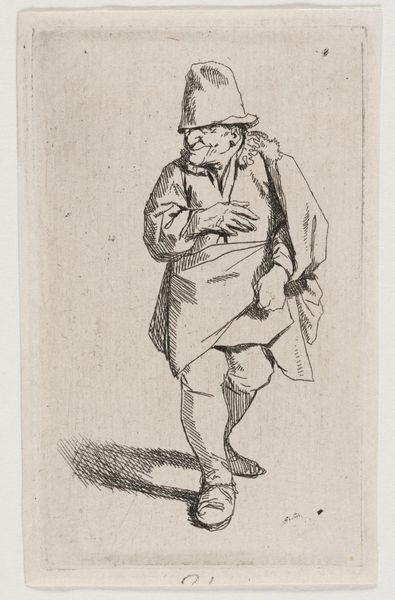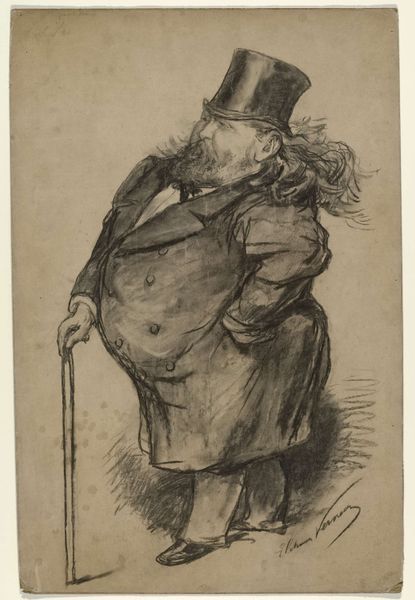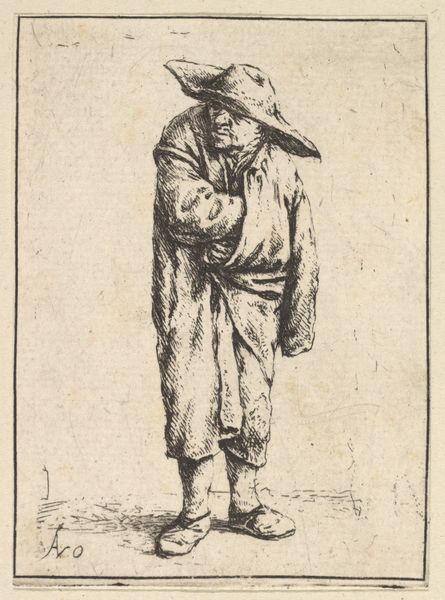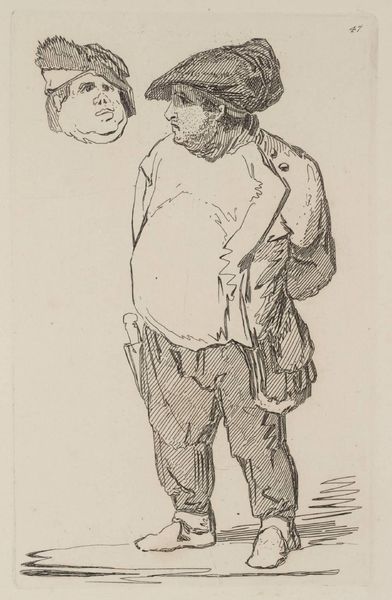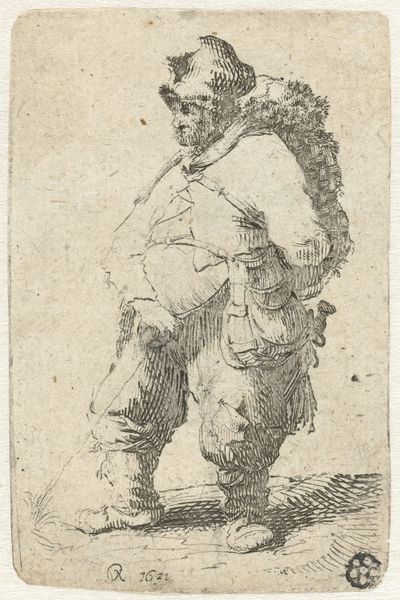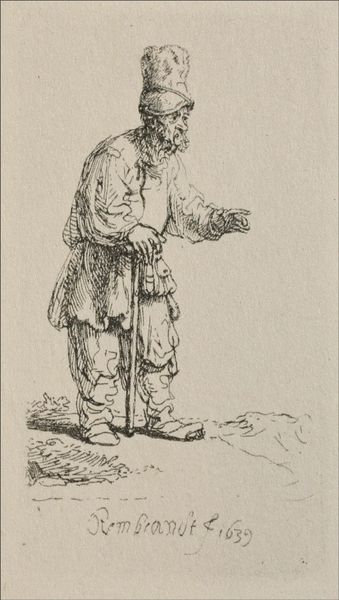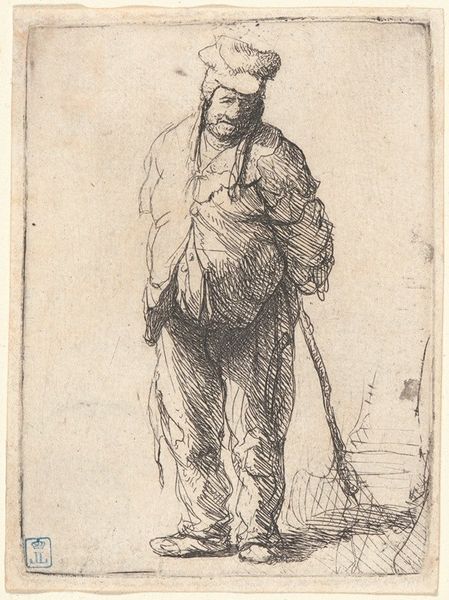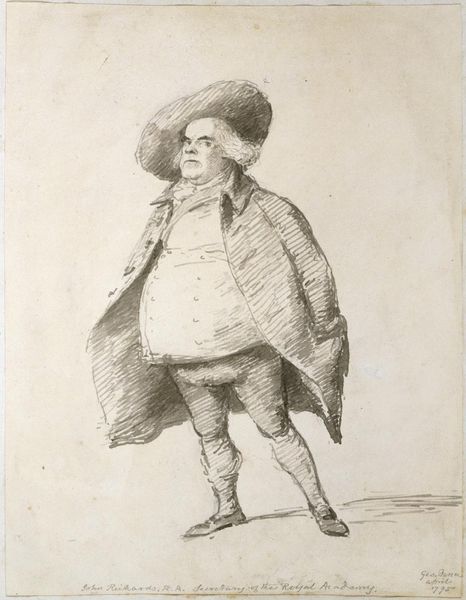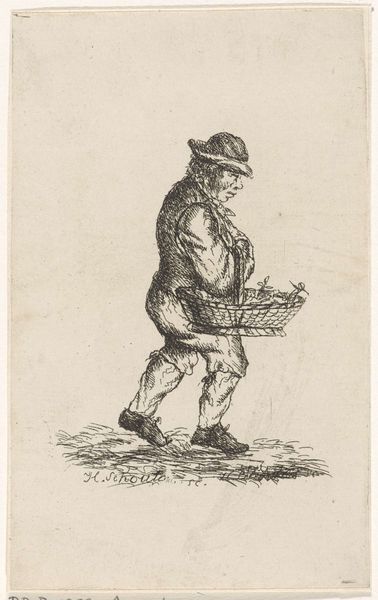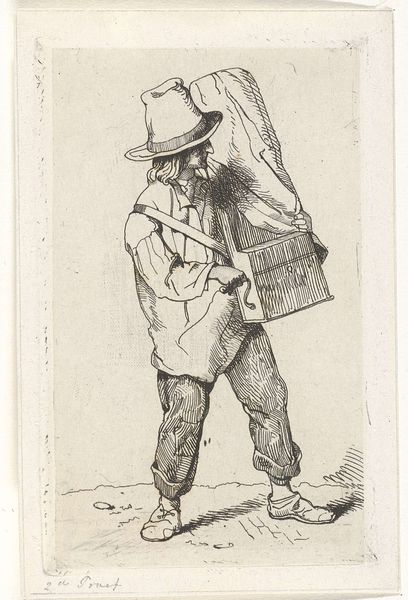
Staande man met hoge muts of hoed, rechterhand voor borst 1642 - 1664
0:00
0:00
cornelisbega
Rijksmuseum
drawing, print, etching, ink
#
portrait
#
drawing
#
dutch-golden-age
# print
#
etching
#
figuration
#
ink
#
ink drawing experimentation
#
pen-ink sketch
#
genre-painting
Dimensions: height 78 mm, width 48 mm
Copyright: Rijks Museum: Open Domain
Editor: So, here we have "Standing Man with High Cap or Hat, Right Hand in Front of Chest," created sometime between 1642 and 1664 by Cornelis Bega. It's an etching. It looks so simple, almost like a quick sketch. What do you see when you look at this piece? Curator: I see the means of production at the forefront. It’s an etching, fundamentally a *printed* image. Think about what that means in the Dutch Golden Age: reproduction, accessibility. This isn’t a unique, precious painting made for a wealthy patron. This is something intended for wider circulation, probably purchased and collected by the emerging middle class. Editor: Interesting! I hadn't considered the socioeconomic implications of the medium itself. Does that change your interpretation of the subject matter? Curator: Absolutely. He's not a nobleman, is he? He’s an artisan or perhaps a merchant. His clothing is functional. The fact that Bega chose *this* subject, and that it was reproduced via etching, points to a shift in patronage and the art market. It suggests a growing interest in images depicting everyday life and the laboring classes. The details in the clothing, rendered through the etched line, offer insights into the textiles and sartorial practices of the time. Editor: So you're saying the very act of etching and choosing this subject elevated the working class in a way? Curator: To a degree, yes. It democratized representation. Consider, too, the physical labor involved in creating the etching plate itself, the process of acid biting into the metal – labor mirroring the subject of the artwork itself. Do you see any other material elements suggesting consumption that could tell us about the economics of the period? Editor: Hmm, that's a really insightful point. No, not that I immediately recognize, though it does emphasize the significance of studying art from a material perspective. Curator: Indeed. Understanding the materials, production methods, and the intended audience transforms our understanding of art historical value.
Comments
No comments
Be the first to comment and join the conversation on the ultimate creative platform.
